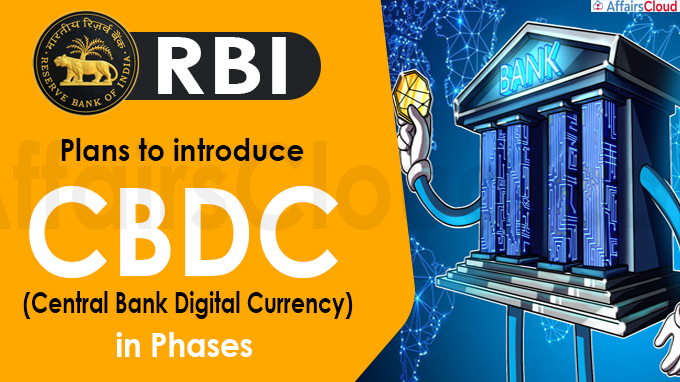
What is CBDC?
A CBDC is a legal tender that would be issued by the central bank in a digital form. It is exchangeable one-to-one with fiat currency and it would appear as a liability (currency in circulation) on a central bank’s balance sheet.
Reasons for Adopting CBDC:
i.To meet the public’s need for digital currencies and to protect people from the usage of private virtual currencies.
- Over the last 5 years, the digital payments of India have grown at a Compound annual growth rate (CAGR) of 55 percent.
- Private currencies are the virtual currencies that would be issued by a private organization. Those currencies could not be convertible one-to-one into the sovereign currency.
- To make more efficient issuance (like Denmark, Germany, Japan, and the US)
ii.To make the transition from RBI’s paper currency into a more acceptable electronic form of currency.
iii.To overcome the time zone differences under currency settlements and Herstatt/settlement risk.
iv.To reduce the cost of printing, transporting, storing and distributing currency.
Key Points:
i.Based on the extent of its usages, CBDC would reduce the transaction demand for bank deposits.
ii.CBDC’s could act as an alternative to bank deposits, but as they are being a currency they couldn’t pay interest (like bank deposits).
iii.The introduction of CBDC would need legal changes in the nation’s foreign exchange rules and information-technology laws. To date, no central bank has launched CBDC.
iv.Shankar stated RBI’s close examination of several aspects of launching a general purpose CBDC at a population scale. This includes scope (retail or wholesale), technology (distributed ledger or centralized ledger), validation base (token or account-based system) and distribution format (issued directly by the central bank or by banks).
Recent Related News:
As per the ‘State of Economy’ report by the Reserve Bank of India (RBI) in June 2021, India ranked 2nd after Turkey in terms of the shares of ‘Surplus Transferred from Central Banks to Governments’ (as per percent of GDP). RBI has transferred 0.44 percent of GDP to the Government in FY21, in FY20 it was at the 4th position with 0.29 percent.
About Reserve Bank of India(RBI):
i.Key Appointments in RBI – Appointments Committee of the Cabinet (ACC) headed by the Prime Minister appoints the governor and deputy governors of RBI.
ii.Section 7 in The RBI Act, 1934, empowers the government to issue directions to the RBI governor.
iii.Shaktikanta Das – The 25th governor of RBI from 11 December 2018